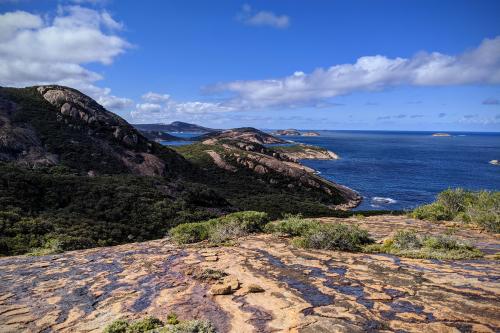About this place
While exploring the south coast of Australia in 1802, Matthew Flinders sailed a dangerous route through the Recherche Archipelago.
He named it Lucky Bay when his vessel HMS Investigator took shelter here from a summer storm. The botanist Robert Brown went ashore and explored a diverse and largely unknown flora, discovering and naming many new species. A plaque on the rocks at the eastern end of the bay celebrates this historic event.
Set up camp at Lucky Bay Campground, explore the trails and visit the beach which is arguably the whitest sand in Australia.
Be aware that these beaches are notoriously treacherous for vehicles and it is easy to become bogged in the most innocent looking wet or dry sand. Ask the ranger about surface conditions and tides.
If you drive your four-wheel drive vehicle onto the beach, beware of other beach users and wildlife and drive slowly. Normal road rules apply.
Safety information
Plan when to visit. Consider travelling with a personal location beacon (PLB). In the event you need to be rescued it could save your life!
The Department of Biodiversity, Conservation and Attractions undertakes 1080 baiting at this location to reduce the impacts of feral cats and foxes on native wildlife.
Meat baits containing 1080 poison are laid in or around this area on an ongoing basis. 1080 is poisonous to humans and will kill domestic cats and dogs. Pets are not permitted in this park.
For further information contact your local Parks and Wildlife Service office or visit Western Shield.
Gallery
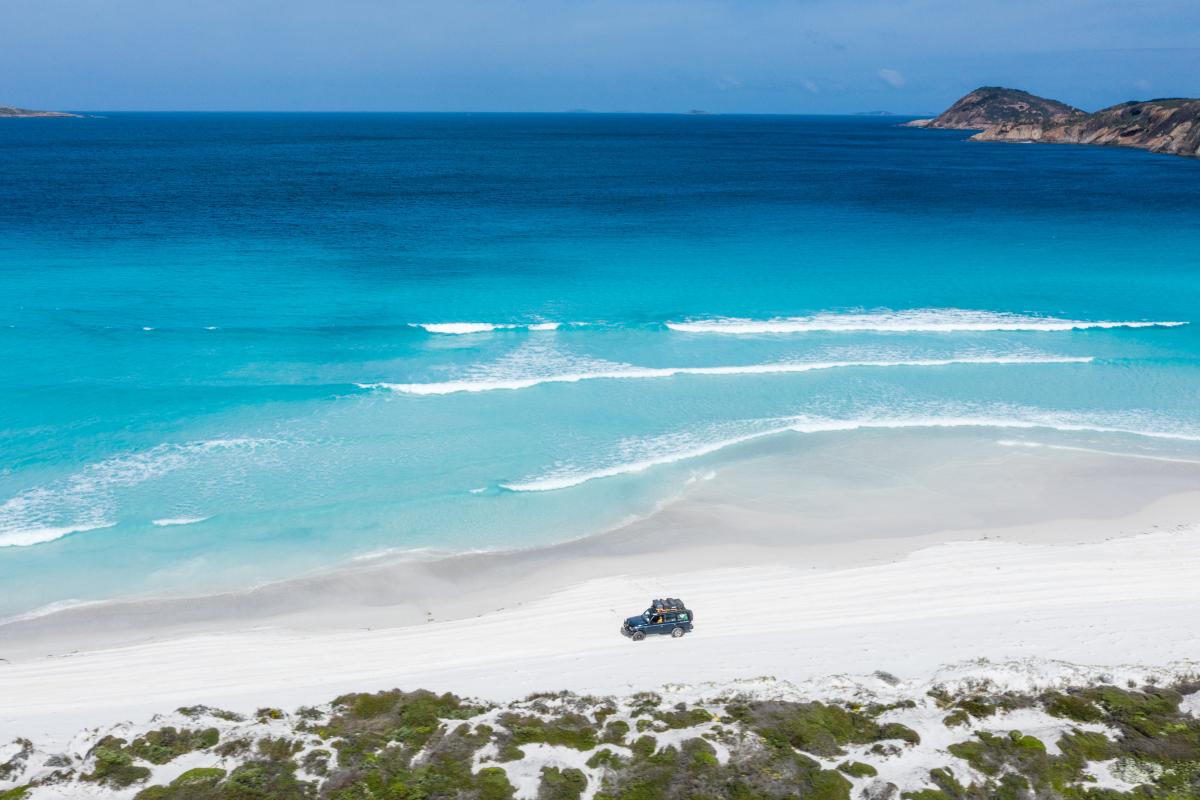
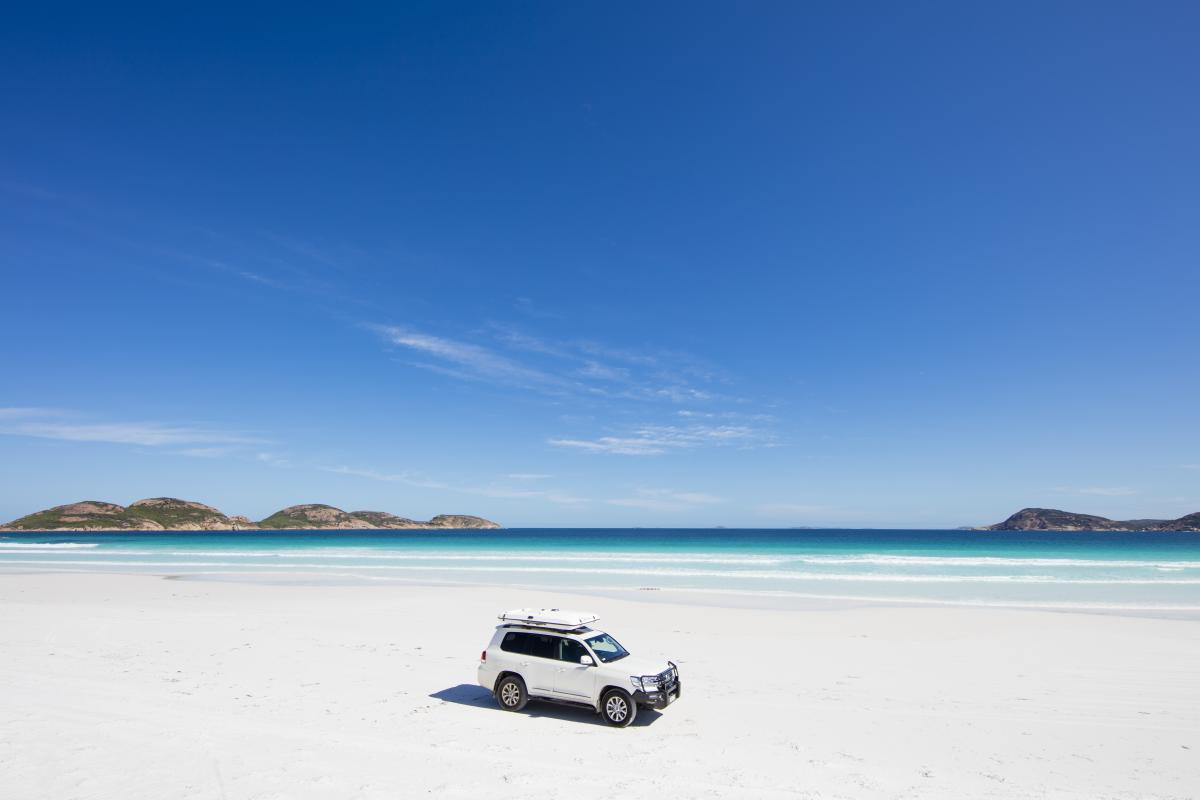
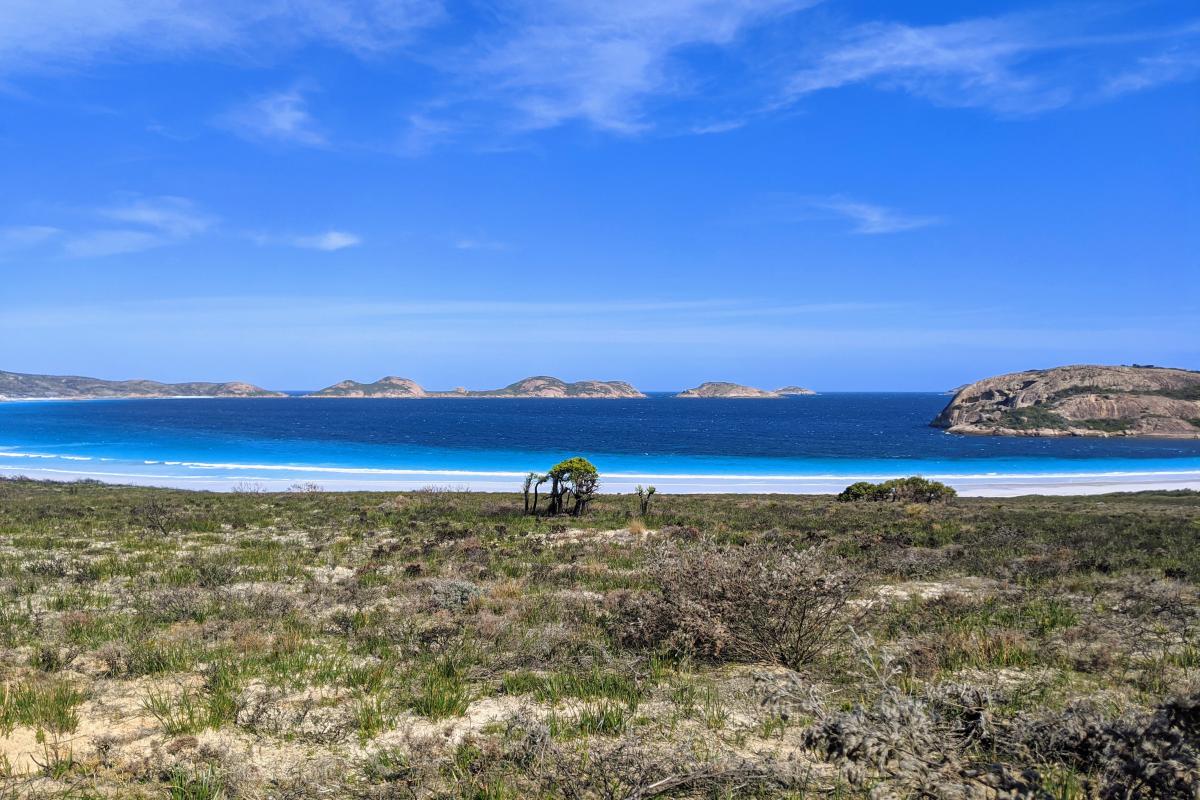
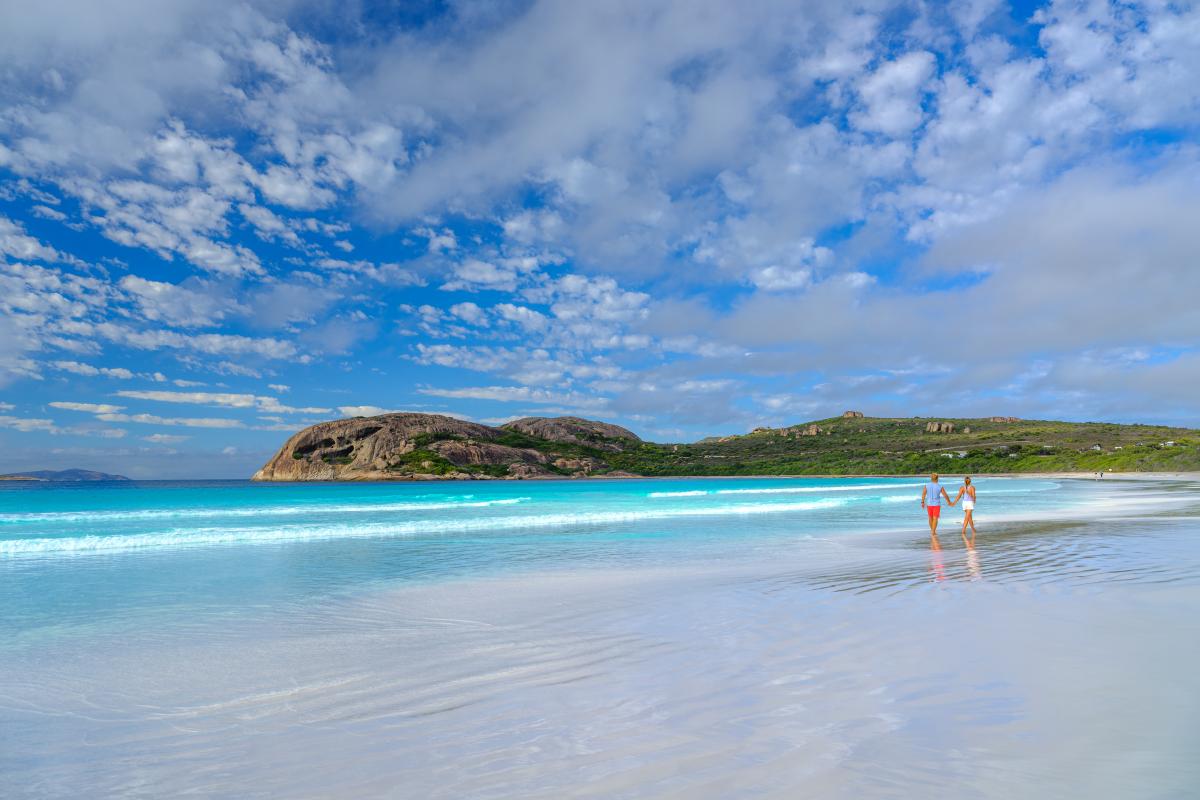
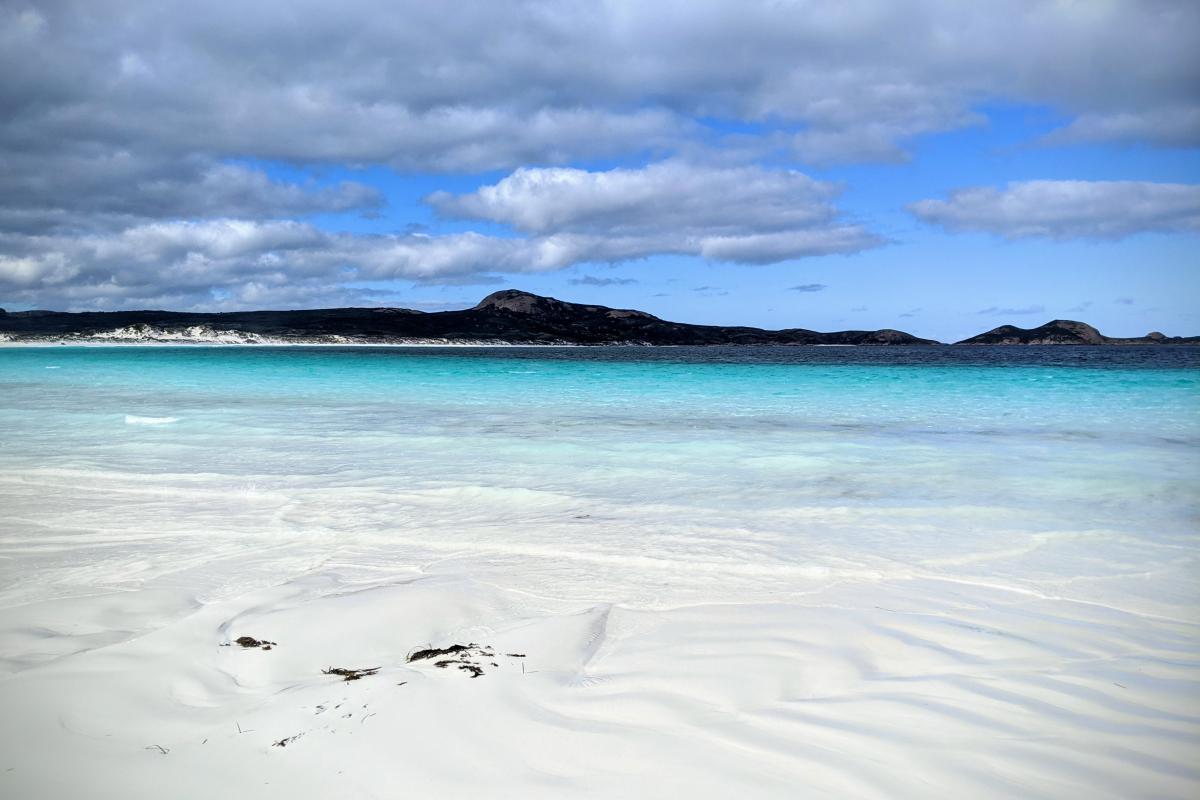
Make the Esperance Promise
While travelling in and around Esperance, make a promise to embrace the elements of this land and ensure your visit is sustainable and respectful. Make the Esperance Promise.
Please note, campfires are not permitted at any of the campgrounds in national parks.
Facilities
Barbecue
Toilet
Activities
The sheltered bay is ideal for swimming, long walks, fishing, surfing and launching small boats.
 Boating
Boating
 Bushwalking
Bushwalking
 Camping
Camping
 Fishing
Fishing
 Four-wheel driving
Four-wheel driving
 Picnicking
Picnicking
 Swimming
Swimming
Plants, wildlife and fungi
Visit the Atlas of Living Australia for a list of species recorded within a 5km radius of Lucky Bay.
Traditional Owners
We recognise and acknowledge Wudjari people as the Traditional Owners of Cape Le Grand National Park.
